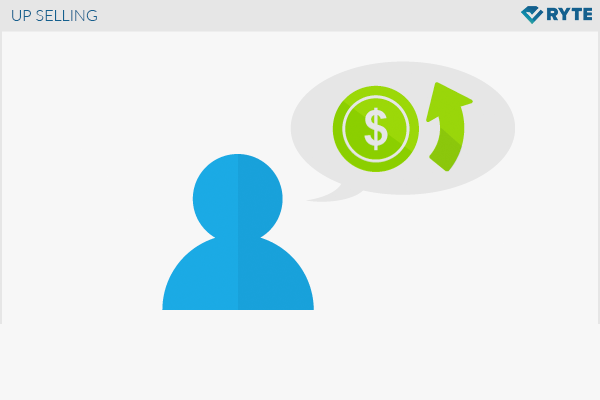Up-Selling
Up-selling is a sales method with the aim of making higher-priced and higher-quality products more attractive to the customer than the actually desired product.
Definition
The hallmark of up-selling is that the customer will spend more money on a successful sale than originally planned. The principle is based on the fact that most consumers, when they enter a shop or an online store, already have a rough idea of the desired product and its price, but are not yet set on a specific item.
Through a corresponding argumentation, which makes the benefits of the higher-valued and more expensive product clear to the buyer, the store visitor learns that with the higher quality product he may get additional functions, higher quality, longer longevity or another advantage which he may not get with the lower-priced product. This extension of his horizon increases the customer’s expectations of the product to be purchased.
If the sales advisor correctly approaches the sales-consultation, the customer should have the feeling that the less expensive product does not meet his requirements, and will therefore be more willing to pay a higher price for the more expensive product. The purpose of up-selling is thus to spark a need.
Demarcation to cross-selling
Up-selling is often mistaken for cross-selling. They use similar mechanisms, but have a different goal. Cross-selling is not about the distribution of higher-value products, but more products. In online stores, cross-selling information is often found in areas marked “Other customers also bought”, “Accessories for this product” or “Similar products”.
Example
Up-selling can best be illustrated with an example. A customer enters a store and wants to buy a simple CD player. It is sold at a price of about 50 to 75 euros. The seller shows him a very simple model for the price of 50 euros, but recognizes his chance and presents the customer the advantages of the stereo system placed next to it, which offers, besides a cassette deck and MP3 function, also significantly better sound. The price is 90 euros.
After the seller shows him the difference between the acoustics of both devices by means of a sound test, the customer is convinced that the right choice for his needs would be the stereo system, and buys it.
If the seller had engaged in cross-selling on the other hand, he would have sold the CD player to the customer, but convinced him that the investment in headphones or batteries could be useful.
Risks of up-selling
Up-selling offers great opportunities to increase sales, but there are also risks. The biggest problem is the thin line between the generation of additional sales and driving the customer away. It is not difficult to make a product of higher quality palatable to a customer if it has an additional benefit. If, however, the customer has a fixed budget and is not willing to exceed it, the seller risks not being able to sell the more expensive product due to the price but the customer no longer wants to buy the cheaper model because he now knows the advantages of the more expensive model.
Problems in the online stores
Since in the case of an online store, classic consultation such as in an over-the-counter store is not possible, up-selling is even more difficult. It is particularly important to proceed with caution as the customer is only one click away from the leaving the store. Another problem in the online store is that the option of up-selling is not always possible due to technical circumstances. If the customer can use a filter system, for example, to enter a price range within which he or she wants to search for products, the online store can no longer display more expensive products. The possibility to sort product lists in ascending order according to price allows more expensive products to disappear into an unachievable distance.
Relevance to search engine optimization
Up-selling can be used in an online store, similar to cross-selling, in order to strengthen the internal linking. Many shop systems come with an automated function with which related products are displayed and linked on the product details pages. Thus, each product receives several outgoing internal links. Comprehensive internal linking promotes the visibility of the subpages. Subpages that get multiple internal links are considered as being more significant by Google and the likelihood of being able to link is increasing.

